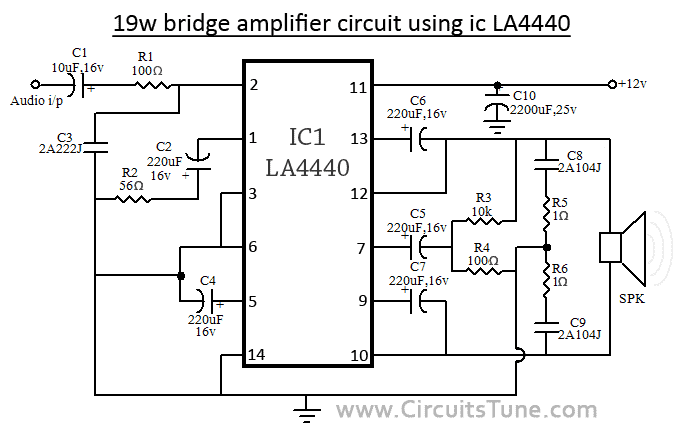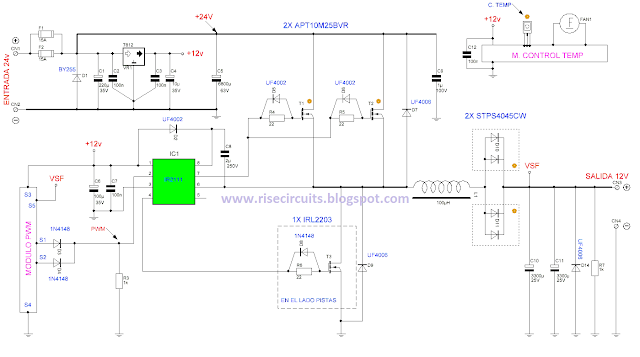High Quality Moving Magnet Pick-up module
Two-stage Series/Shunt feedback RIAA equalizationAny electronics amateur still in possess of a collection of vinyl recordings and aiming at a high quality reproduction should build this preamp and add it to the Modular Preamplifier chain. This circuit features a very high input overload capability, very low distortion and accurate reproduction of the RIAA equalization curve, thanks to a two-stage op-amp circuitry in which the RIAA equalization network was split in two halves: an input stage (IC1A) wired in a series feedback configuration, implementing the bass-boost part of the RIAA equalization curve and a second stage, implementing the treble-cut part of the curve by means of a second op-amp (IC2A) wired in the shunt feedback configuration.
 Parts:
Parts:R1_____________270R 1/4W Resistor
R2_____________100K 1/4W Resistor
R3_______________2K2 1/4W Resistor
R4______________39K 1/4W Resistor
R5_______________3K9 1/4W Resistor
R6_____________390K 1/4W Resistor
R7______________33K 1/4W Resistor
R8______________75K 1/4W Resistor (or two 150K resistors wired in parallel)
R9_____________560R 1/4W Resistor
C1_____________220pF 63V Polystyrene or Ceramic Capacitor
C2_______________1µF 63V Polyester Capacitor
C3______________47µF 25V Electrolytic Capacitor
C4______________10nF 63V Polyester Capacitor 5% tolerance or better
C5_______________1nF 63V Polyester Capacitor 5% tolerance or better
C6,C9__________100nF 63V Polyester Capacitors
C7,C10__________22µF 25V Electrolytic Capacitors
C8,C11________2200µF 25V Electrolytic Capacitors
IC1___________LM833 or NE5532 Low noise Dual Op-amp
IC2___________TL072 Dual BIFET Op-Amp
IC3___________78L15 15V 100mA Positive Regulator IC
IC4___________79L15 15V 100mA Negative Regulator IC
D1,D2________1N4002 200V 1A Diodes
J1,J2___________RCA audio input sockets
J3______________Mini DC Power Socket
This module comprises also an independent dual rail power supply identical to that described in the Modular Preamplifier Control Center. As with the other modules of this series, each electronic board can be fitted into a standard enclosure: Hammond extruded aluminum cases are well suited to host the boards of this preamp. In particular, the cases sized 16 x 10.3 x 5.3 cm or 22 x 10.3 x 5.3 cm have a very good look when stacked. See below an example of the possible arrangement of the rear panel of this module.
Notes:- The circuit diagram shows the Left channel only and the power supply
- Some parts are in common to both channels and must not be doubled. These parts are: IC3, IC4, C6, C7, C8, C9, C10, C11, D1, D2 and J3.
- IC1 and IC2 are dual Op-Amps, therefore the second half of these devices will be used for the Right channel
- This module requires an external 15 - 18V ac (50mA minimum) Power Supply Adaptor.
Technical data:Sensitivity @ 1KHz: 4.3mV RMS input for 200mV RMS output
Max. input voltage @ 100Hz: 53mV RMS
Max. input voltage @ 1KHz: 212mV RMS
Max. input voltage @ 10KHz: 477mV RMS
Frequency response @ 200mV RMS output: flat from 30Hz to 23KHz; -0.5dB @ 20Hz
Total harmonic distortion @ 1KHz and up to 8.8V RMS output: 0.0028%
Total harmonic distortion @10KHz and up to 4.4V RMS output: 0.008%




































